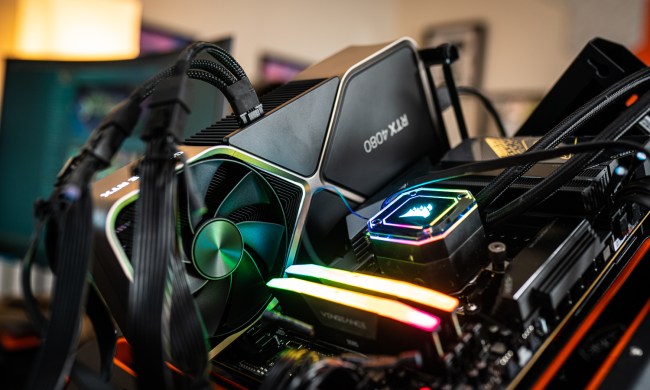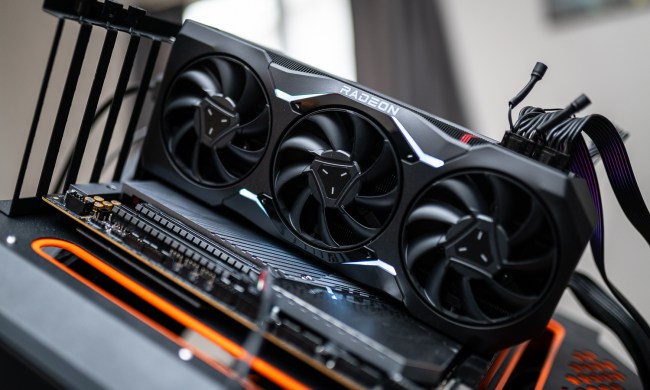Following the recent release of Intel Arc, a new brand dedicated to high-performance gaming hardware, software, and services, Intel made another announcement. The company teased the upcoming release of its first discrete gaming graphics card in an unexpectedly unique way.
If Intel’s goal was to draw attention to its line of graphics cards that had until recently been code-named Intel Arc Alchemist, it’s safe to say it succeeded. The company sent 1,000 of its own drones out into the night sky and recorded a dazzling light show that was then compiled into a one-minute video on Twitter.
We’ve painted pixels in the sky with 1,000 Intel drones. Now, that’s a visual experience. What will you create next? https://t.co/FYeygLy6Oh #IntelArc #inteldrones #inteldronelightshows #dronelightshows pic.twitter.com/c0Q4ycNYVS
— Intel Graphics (@IntelGraphics) August 17, 2021
“We’ve painted pixels in the sky with 1,000 Intel drones. Now, that’s a visual experience. What will you create next?” said the message attached to the video.
Aside from a number of fun visual effects created by the drones, the video carried an important teaser — the image of a dual-fan graphics card. We can only assume that this might be the future design of Intel’s Alchemist, but it is possible that the brand just tried to create an easily recognizable image. Whether Intel’s drone creation is a correct depiction of Alchemist or not, it seems the company is not going to put too much stock into cooling. Based on current information, two fans seem adequate for most, if not all, configurations of this GPU.
Intel hasn’t confirmed any specs of its future gaming GPUs yet, although the company has indicated that it aims to rival Nvidia’s and AMD’s best graphics cards. Leaks indicate that the cards will have a maximum of 512 execution units (EUs) combined with 16GB of GDDR6 memory. Twitter user @GPUsAreMagic stated that the 512 EUs found in Arc Alchemist are divided into four groups, each including 128 EUs. However, we don’t know this for a fact, as this assumption is based on a render of the die that was included in one of Intel’s video announcements.

Alchemist is going to be the first product released by the Intel Arc team. Anton Kaplanyan, a recently poached ex-Nvidia DLSS engineer who now works for Intel, recently revealed more about the card’s capabilities.
“In case you were curious, Intel Arc GPUs will come with full DX12U support, including mesh shading and high-performance ray tracing. Bonus, high-quality neural supersampling deserves a separate announcement,” said Anton in response to the launch of Intel Arc.
Intel’s “high-quality neural supersampling” sounds a lot like Nvidia’s DLSS and AMD’s FSR. It’s certainly a feature that future Intel GPU owners will be happy to have, but it’s uncertain how much use it will find in gaming. As game developers already have to try to optimize their games for both DLSS and FSR, it’s likely that Intel’s tech will not be supported on too many platforms — at least not until the cards hold a larger share of the market.
Intel Arc’s plans in regards to the gaming



